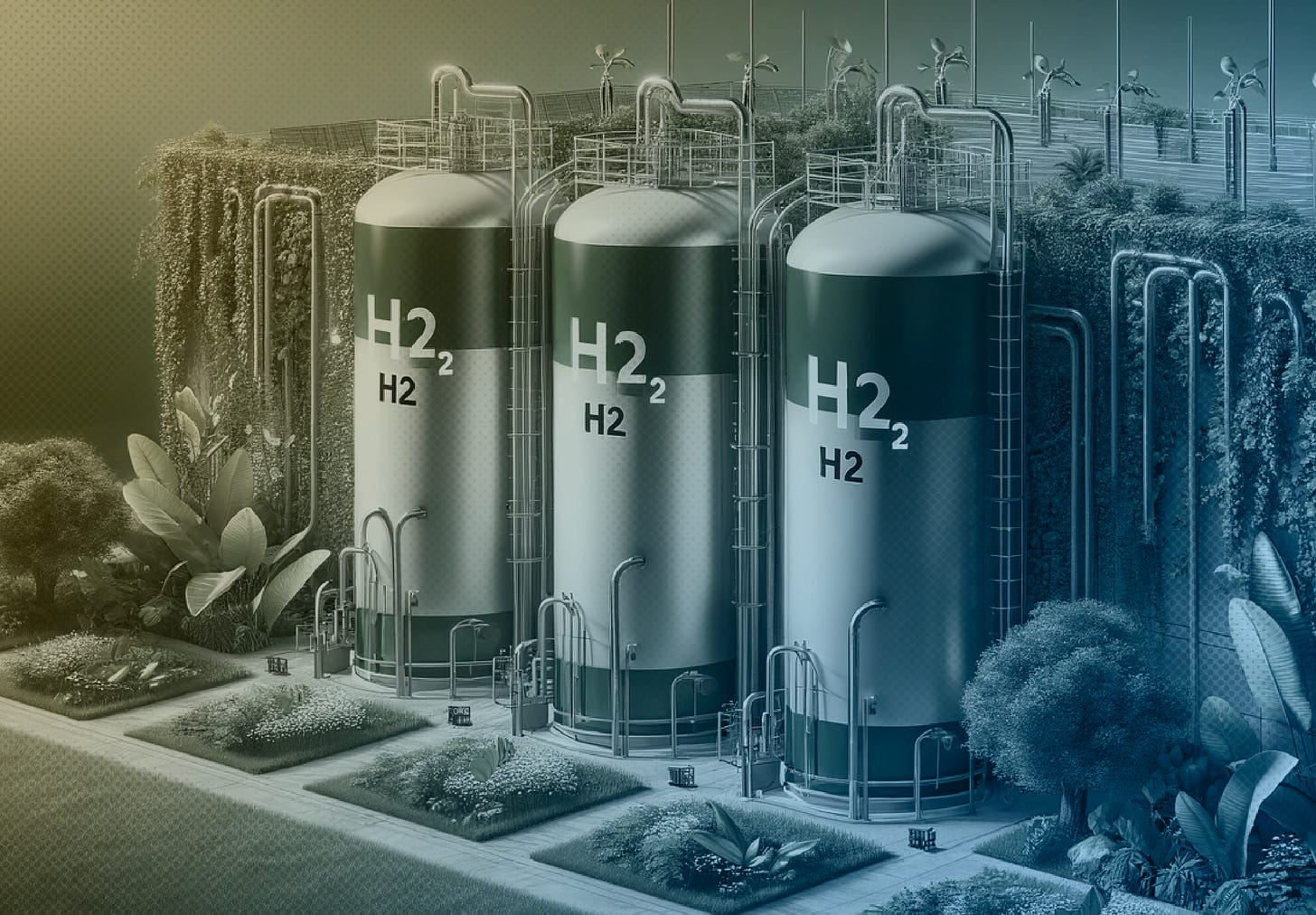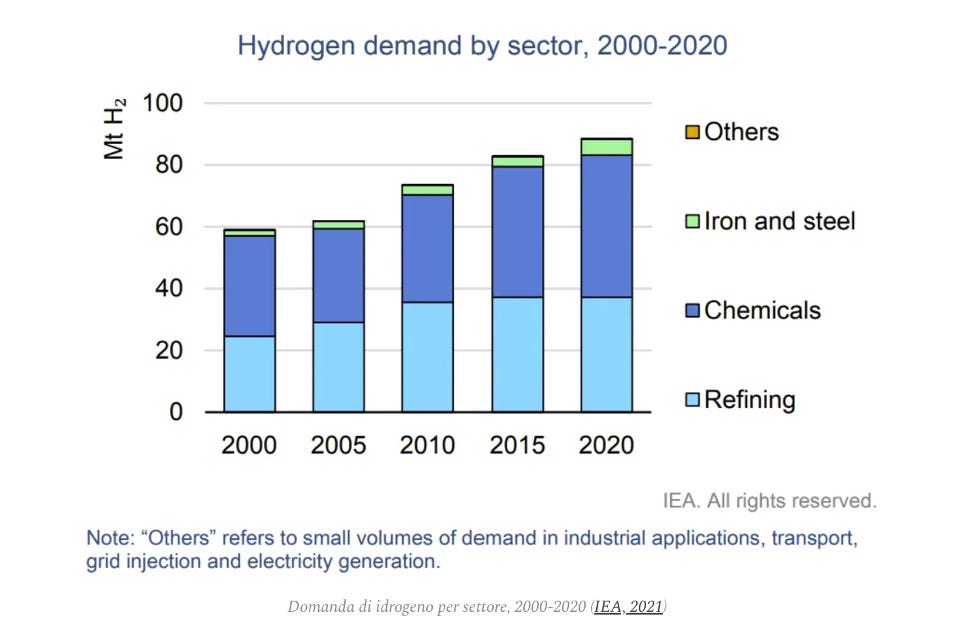How Hydrogen is Shaping the Future of Global Energy
A Deep Dive into Technological Advancements, Strategic Investments, Challenges and Opportunities in the Hydrogen Economy that are Driving a Global Shift to a New Era in Energy
Hydrogen production and usage are undergoing a significant transformation, driven by a growing need to transition towards more sustainable energy sources.
Globally, hydrogen consumption reached 95 million tons in 2022, with an annual increase of 3% according to the International Energy Agency (IEA). Although this growth is promising, it remains concentrated in traditional uses such as refining and the chemical industry, with less than 0.1% coming from new applications.
Goldman Sachs estimates that decarbonization and achieving net-zero emissions will require cumulative investments of $5 trillion, with the total potential market for hydrogen generation possibly reaching $1 trillion by 2050.
Yoshinori Kanehana, president of Kawasaki Heavy Industries and co-chair of the Hydrogen Council, emphasizes that despite the urgency driven by growing concerns for energy security, the on-the-ground deployment of hydrogen is not moving quickly enough and needs acceleration to realize its benefits.
"With the growing concerns around energy security, it is clear our economies need hydrogen. But on-the-ground deployment is not moving fast enough and needs to accelerate to realize the benefits of hydrogen” - Yoshinori Kanehana
Over 30 countries have already released official hydrogen strategies and plans, outlining consumption trends and infrastructural plans. These actions are a testament to the 'clean hydrogen revolution', an area where investors and governments are collaborating to finance and capitalize.
China has emerged as a leader in electrolyzer capacity, a key component in green hydrogen production, with installed capacity reaching over 200 MW in 2022. It is forecasted that this capacity will increase to 1.2 GW by the end of 2023, representing 30% of global capacity. This development is crucial for the transition to low-emission hydrogen and aligns with growing concerns over energy security and environmental sustainability. More details on this development can be found in the IEA's "Global Hydrogen Review 2023" report.
On the other side of the world, Europe and the United States are making significant strides. The European Union recently announced the creation of a European Hydrogen Bank with a budget of 3 billion euros, an initiative underscored by the statement from Commission President Ursula von der Leyen, emphasizing the need to move from a "niche hydrogen economy to one on a large scale". This is an important step in increasing investments in the sector and accelerating the development of the hydrogen market.
“We need to move our hydrogen economy from niche to scale.” - Ursula von der Leyen
At the same time, the Inflation Reduction Act in the United States and the REPowerEU program in Europe have given a significant boost to the hydrogen transition.
However, the hydrogen sector faces significant challenges, particularly in terms of production costs.
Currently, the estimated cost of producing renewable hydrogen is between $4.5 and $6.5 per kilogram. However, a reduction to $2.5-4.0 per kilogram is expected by 2030, attributed to advancements in electrolyzer technology and decreasing costs of renewable energies, as reported in the Hydrogen Council's "Hydrogen Insights 2023 December Update."
The Central Role of Hydrogen in the Global Energy Economy
Globally, hydrogen production is still predominantly reliant on fossil fuel-based technologies. In 2022, 70% of the energy required for hydrogen production was met using natural gas, and about 30% by coal, predominantly utilized in China. However, low-emission hydrogen production accounted for less than 1% of total hydrogen output in 2022, despite a 5% increase from 2021.
The regulatory landscape is evolving, with supportive measures such as tax credits for production and financial backing for hydrogen hubs in the United States, renewable hydrogen mandates in the Renewable Energy Directive (RED III) in Europe, and contracts for difference (CfD) in Japan. Nevertheless, regulatory uncertainties persist, impacting the effectiveness of these policies in the market.
Throughout 2023, the hydrogen sector has demonstrated significant developments, reflecting its growing importance in the global energy economy. A notable expansion in the pipeline of clean hydrogen projects has been observed, with over 1,400 initiatives announced. These projects collectively represent investments exceeding $570 billion USD anticipated up to 2030. This increase is a testament to the rising interest and commitment in the clean hydrogen field, with Europe standing out as a leader in investment volume, announcing over $190 billion USD, closely followed by North America and China. This trend underscores the increasingly strategic position of clean hydrogen in the global energy economy.
Two Decades of Hydrogen: Its Role in Industries
Over the last twenty years, the energy landscape has witnessed a substantial increase in the use of hydrogen, a versatile and crucial element for many industrial applications, highlighting trends that warrant in-depth examination.
In the refining sector, hydrogen consumption has remained dominant, reflecting its fundamental importance in the process of transforming crude oil into finished products. This consistent demand underlines not only the essentiality of hydrogen in the treatment of fossil fuels but also the ongoing centrality of such energy sources in the current economy.
Simultaneously, the chemical industry has seen a marked increase in the demand for hydrogen. Here, hydrogen is primarily used in the synthesis of ammonia and methanol, indispensable compounds for a variety of chemical processes. The rise in demand within the chemical sector indicates the global expansion of the industry and its inherent dynamism.
The steel industry, too, has shown significant hydrogen demand, mainly used in the reduction of iron oxide in steel production. Although the volume of hydrogen used is lower compared to the refining and chemical sectors, its application in steelmaking is particularly important for the transition towards environmentally friendly production processes.
Attention has also turned to other industrial areas, transportation, and injection into the electrical grid, albeit representing a smaller portion of total consumption. These emerging sectors, while not yet having an impact comparable to that of traditional industries, are gaining relevance in the perspective of a future economy based on cleaner and renewable energy sources.
Hydrogen, the most abundant element
When discussing hydrogen as a clean energy carrier, it is crucial to understand its production process, as not all forms of this gas are considered "clean."
Hydrogen is the simplest and most abundant element in the universe. However, on Earth, it rarely exists in gaseous form, thus requiring a process of separation from other elements.
Hydrogen only emits water when burned. However, creating it can involve a high carbon intensity.
Green hydrogen is the only form produced in a climate-neutral manner, making it an essential candidate to contribute to the global reduction of emissions, aiming to achieve zero emissions by 2050. The demand for hydrogen has more than tripled since 1975. According to a report from the International Energy Agency, "The Future of Hydrogen," nearly all hydrogen is produced from fossil fuels.
At € 1.5/kg of H2, the so-called "grey" hydrogen is the most economical form available, but its production emits 9.3 kg of CO2 per kilo of hydrogen, not qualifying it as clean energy.
When CO2 is removed using carbon capture technologies, "blue" hydrogen is created, but this process increases the price of hydrogen and its carbon footprint.
Green or "clean" hydrogen is produced through the electrolysis of water using renewable energy. This keeps the carbon footprint lowest but currently costs between €2.5/kg and €5.5/kg.
When "geological hydrogen" is not produced but extracted, it is called white hydrogen - a natural form sometimes found underground. However, practical methods for extracting it are limited, yet according to Beam Earth, a pioneer in clean oil extraction, white hydrogen can be produced at a significantly lower cost, from 0.5 to 1 dollar per kilogram.
Different Shades of Hydrogen. Hydrogen Production.
Now, to better navigate the intricacies, let's delve into greater detail about the production methods of hydrogen and understand its nuances...
As we have mentioned, hydrogen can be produced from a variety of resources







